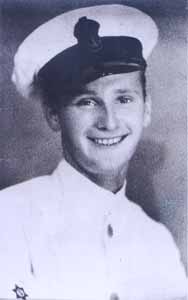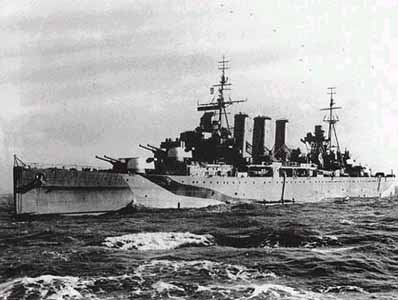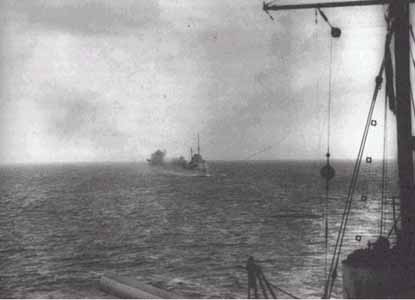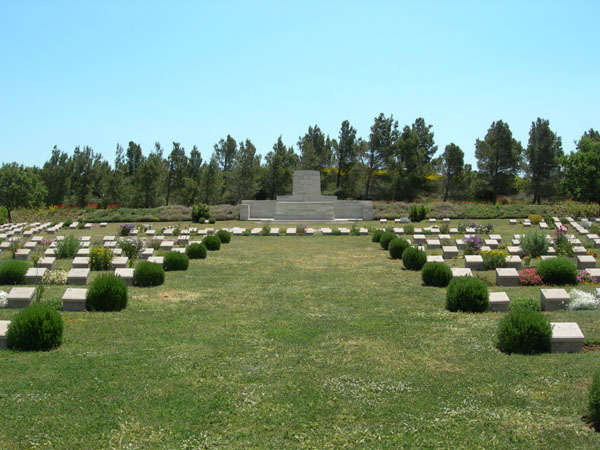The
Wilkeys and the two World Wars
Ernest
Robert Wilkey
The
Wilkey family saw active service in both World Wars. It is believed that at least
three out of the four sons of William Wilkey (b.1871) saw active service in Europe
in the 1914-18 war and that one was killed in action, this being Ernest Robert
Wilkey (known to the family as 'Ernie'). With the rank of Trooper, his service
number was 157, Household Battalion. He is commemorated on the Bath war memorial
at the entrance to the Royal Victoria Park, Bath as 'E. R. Wilkey', and as follows:
Ernest Robert
Wilkey fell near the Ypres Salient on the 12 October 1917 when in the Third Battle
of Ypres an offensive was mounted by Commonwealth forces to divert German attention
from a weakened French front further south. The initial attempt in June to dislodge
the Germans from the Messines Ridge was a complete success, but the main assault
north-eastward, which began at the end of July, quickly became a dogged struggle
against determined opposition and the rapidly deteriorating weather. The campaign
finally came to a close in November with the capture of Passchendaele.
Those
United Kingdom and New Zealand servicemen who died after 16 August 1917 are named
on the memorial at Tyne Cot in the vacinity of Zonnebeke, West Vlaanderen, Belgium,
a site that marks the furthest point reached by Commonwealth forces in Belgium
until nearly the end of the war. Ernest Robert Wilkey has no grave but is commemorated
on the third panel.
The
following photograph of the Tyne Cot Memorial shows the third panel in the foreground:
The TYNE COT MEMORIAL
now bears the names of almost 35,000 officers and men whose graves are not known.
The memorial, designed by Sir Herbert Baker with sculpture by Joseph Armitage
and F V Blundstone, was unveiled by Sir Gilbert Dyett in July 1927. The memorial
forms the north-eastern boundary of TYNE COT CEMETERY, which was established around
a captured German blockhouse or pill-box used as an advanced dressing station.
The original battlefield cemetery of 343 graves was greatly enlarged after the
Armistice when remains were brought in from the battlefields of Passchendaele
and Langemarck, and from a few small burial grounds. It is now the largest Commonwealth
war cemetery in the world in terms of burials. At the suggestion of King George
V, who visited the cemetery in 1922, the Cross of Sacrifice was placed on the
original large pill-box. There are three other pill-boxes in the cemetery. There
are now 11,952 Commonwealth servicemen of the First World War buried or commemorated
in Tyne Cot Cemetery. 8,365 of the burials are unidentified but there are special
memorials to more than 80 casualties known or believed to be buried among them.
Other special memorials commemorate 20 casualties whose graves were destroyed
by shell fire. The cemetery was designed by Sir Herbert Baker.
Frederick
Sidney Wilkey
Frederick
Sidney Wilkey (b. Stepney 1919) saw active service in the Mediterranean during
the early part of the war and served on the heavy cruiser HMS Kent, which was
torpedoed off Bardia, an eastern seaport in Libya which had been fortified by
the Italians. The fortifications were commanded by one General Annibale 'Electric
Whiskers' Beronzoli, so nicknamed because of his spiked beard. The town changed
hands several times before the British Army finally took it in 1942.

On shore leave in Alexandria,
July 1940 |

The
heavy cruiser HMS Kent |
HMS
Kent was laid down at Chatham Dockyard on 15 November 1924, and launched 16 March
1926. In 1928, she was commissioned as flagship of the 5th Cruiser Squadron on
the China Station. In 1937, she returned to Chatham and underwent a major refit,
which included increasing her armour. Once done, Kent returned to the Far East.
December
1939 saw her transfer to the 4th Cruiser Squadron in the East Indies, although
she did not stay there long. Frederick Wilkey joined her in Ceylon (now Sri Lanka).
By August the squadron had moved to the Mediterranean and was involved in the
protection of convoys.
Frederick
was aboard her on the 15 September 1940 when she left Alexandria for a raid on
Benghazi. Sailing with her was the battleship HMS Valiant, the aircraft carrier
HMS Illustrious and seven destroyers.
The
next day, while south off Crete the Anti-Aircraft cruisers HMS Calcutta and HMS
Coventry joined them. The force then sailed toward Benghazi.
During
the night of 16/17 September, aircraft from the Illustrious mined the harbour
of Benghazi. They also attacked shipping in the harbour with torpedoes. The Italians
lost 2 destroyers and two merchants.
While
returning to base from this attack HMS Kent and two destroyers were detached to
bombard Bardia. During the night of 17/18 September HMS Kent was hit in the stern
by a torpedo from Italian torpedo bombers. The destroyers towed her back to base
only with great difficulty.

HMS
Kent, just before being hit by a torpedo off Bardia, Eastern Libya |
Repairs at Alexandria
and Simonstown allowed her to get back to the United Kingdom. Extensive repairs
at Devonport Dockyard followed. A bomb hitting her while in dock made these worse.
Repairs were completed in time for her to recommission in September 1941 when
she joined the 1st Cruiser Squadron, part of the Home Fleet. Her tasks included
support of Russian Convoys.
At
the end of 1944 she was involved in a collision with a tanker. After repairs on
Clydeside she was retained at Gareloch as Flagship of the Reserve Fleet. In October
1946 she was moved to Chatham to act as flagship of the reserve fleet there. During
the summer of 1947, her armament was removed and she was then used for target
trials. Finally, in January 1948 she was sold and moved to Troon for breaking
up.
Frederick
Wilkey happily survived being torpedoed but 33 officers and men sadly lost their
lives. Fred went on to serve in Coastal Command. By the time he left the Royal
Navy at the end of the war Frederick had achieved the rank of Petty Officer.
Ernest
Thomas Wilkey
The
son of Richard Herbert Wilkey was also killed in action during the Second World
War. His name was Ernest Thomas Wilkey and he was also known as Ernie. He is commemorated
on the same Bath war memorial as the above. His name is recorded as 'E. T. Wilkey'.
Signalman Ernest
Thomas Wilkey served with the Royal Corps of Signals, 4th Air Form. Sigs. (The
North Somerset Yeomanry, R.A.C.) and was 22 years old when killed in action on
the 28 August 1942 near El Alamein, two months before the famous battle of the
same name.
The
campaign in the Western Desert was fought between the Commonwealth forces (with,
later, the addition of two brigades of Free French and one each of Polish and
Greek troops) all based in Egypt, and the Axis forces (German and Italian) based
in Libya. The battlefield, across which the fighting surged back and forth between
1940 and 1942, was the 1,000 kilometres of desert between Alexandria in Egypt
and Benghazi in Libya. It was a campaign of manoeuvre and movement, the objectives
being the control of the Mediterranean, the link with the east through the Suez
Canal, the Middle East oil supplies and the supply route to Russia through Persia.
EL ALAMEIN WAR
CEMETERY contains the graves of men who died at all stages of the Western Desert
campaigns, brought in from a wide area, but especially those who died in the Battle
of El Alamein at the end of October 1942 and in the period immediately before
that. The cemetery now contains 7,239 Commonwealth burials of the Second World
War, of which 814 are unidentified. There are also 102 war graves of other nationalities.
Alamein
is a village, bypassed by the main coast road, approximately 130 kilometres west
of Alexandria on the road to Mersa Matruh. The first Commonwealth War Graves Commission
road direction sign is located just beyond the Alamein police checkpoint and all
visitors should turn off from the main road onto the parallel old coast road.
The cemetery lies off the road, slightly beyond a ridge, and is indicated by road
direction signs approximately 25 metres before the low metal gates and stone wing
walls which are situated centrally at the road edge at the head of the access
path into the cemetery. The Cross of Sacrifice feature may be seen from the road.
Signalman
Wilkey's service number is 325963 and his grave/memorial reference is XXXIII.
B. 5
A picture
of Ernest Wilkey (Bath Chronicle & Herald 12 Sep 1942) is followed by a picture
of El Alamein War Cemetery:
From the Bath Chronicle
& Herald, 12 Sep 1942, article entitled 'Bath Men Killed in Action': News
has been received by Mr and Mrs R Wilkey, of 15 Park Mansions, that their elder
son, Trooper Ernest Thomas Wilkey, has been killed in action. Educated at Batheaston,
he was 22 years of age. Employed on the office staff of Stothert and Pitt, he
was called up at the outbreak of war, having been a member of the North Somerset
Yeomanry. Trooper Wilkey was the grandson of Mrs E Wilkey of 13, Park Street,
Bath. (Click on portrait above to see original newspaper cutting)
Edwin
Wilkey (son of James & Ellen Wilkey of Bristol & South Wales)
Edwin
Wilkey was a private in the second battalion of the South Wales Borderers, son
of James Wilkey, of 12, Gladstone Place, Sebastopol, Griffiths Town, Newport,
Mon. and was killed in action on the 12 September, 1915 at Gallipoli, Commonwealth
memorial reference II. B. 13., Hill 10 Cemetry, Turkey. The following information
is supplied courtesy of the Commonwealth Wargraves
Commisssion:
The
Anzac and Suvla cemeteries are first signposted from the left hand junction of
the Eceabat- Bigali Road. From this junction travel into the main Anzac area.
Located South West of Azmak and North of the Salt Lake, the cemetery will be found
on the left, 21.5 kms from the junction.
The
eight month campaign in Gallipoli was fought by Commonwealth and French forces
in an attempt to force Turkey out of the war, to relieve the deadlock of the Western
Front in France and Belgium, and to open a supply route to Russia through the
Dardanelles and the Black Sea. The Allies landed on the peninsula on 25-26 April
1915; the 29th Division at Cape Helles in the south and the Australian and New
Zealand Corps north of Gaba Tepe on the west coast, an area soon known as Anzac.
On 6 August, further troops were put ashore at Suvla, just north of Anzac, and
the climax of the campaign came in early August when simultaneous assaults were
launched on all three fronts. The aim of the Suvla force had been to quickly secure
the sparsely held high ground surrounding the bay and salt lake, but confused
landings and indecision caused fatal delays allowing the Turks to reinforce and
only a few of the objectives were taken with difficulty. Hill 10, a low isolated
mound to the north of the salt lake, was taken by the 9th Lancashire Fusiliers
and the 11th Manchesters on the early morning of 7 August 1915. The cemetery was
made after the Armistice by the concentration of graves from isolated sites and
from the 88th Dressing Station, 89th Dressing Station, Kangaroo Beach, 'B' Beach,
26th CCS and Park Lane cemeteries. There are now 699 servicemen of the First World
War buried or commemorated in this cemetery. 150 of the burials are unidentified
but special memorials commemorate a number of casualties known or believed to
be buried among them. The final resting place of Edwin Wilkey:

A
majority of the information and photographs for Ernest Robert & Ernest Thomas
Wilkey and Edwin Wilkey is taken from the Commonwealth War Graves Commission website
at: